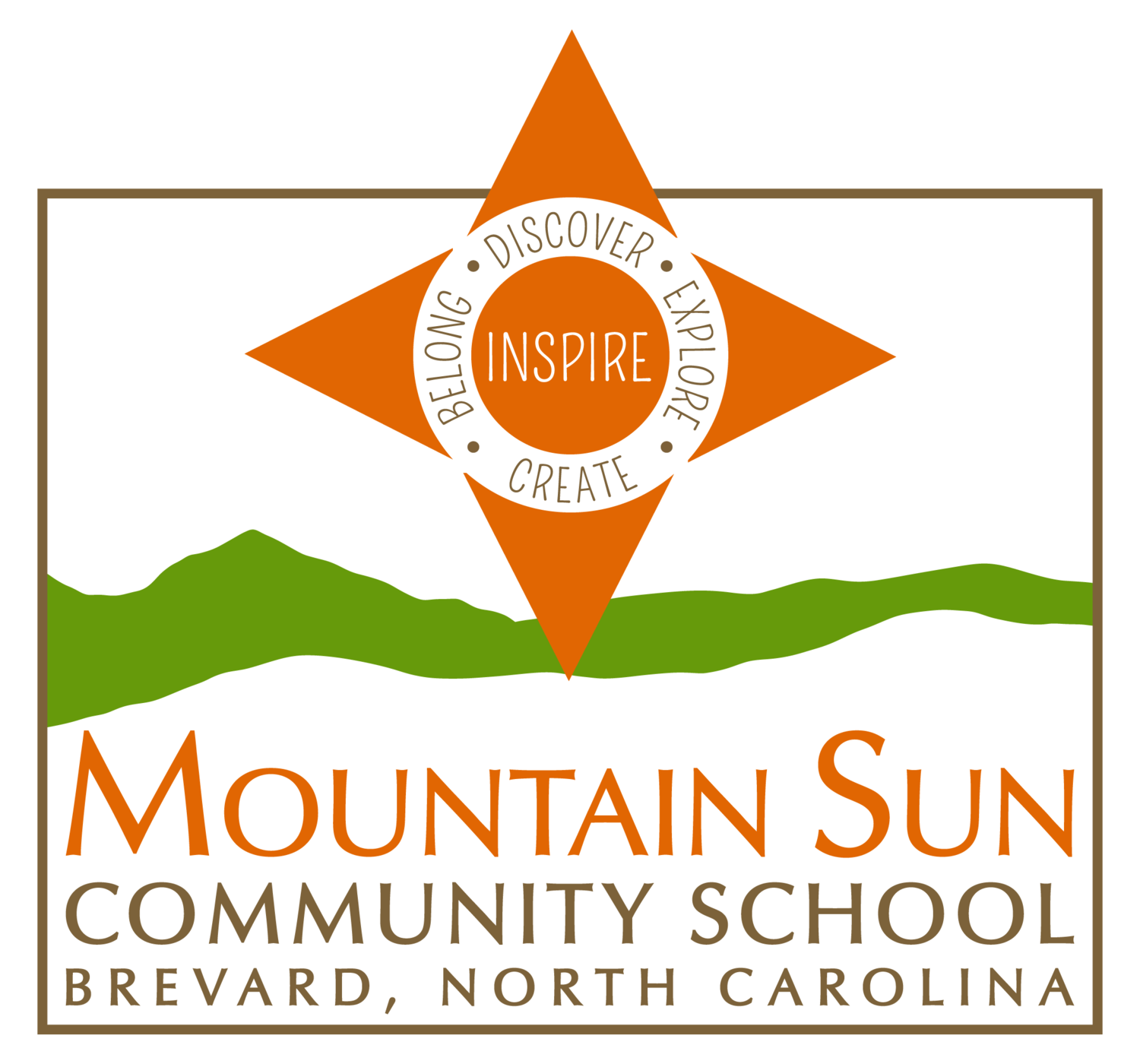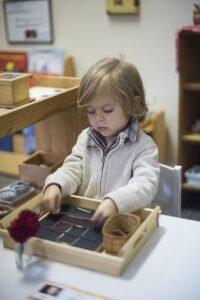The Montessori Philosophy: Cultivating Peaceful Independence
“Education is a natural process carried out by the child and is not acquired by listening to words but by experiences in the environment.”
More than a century ago, Dr. Maria Montessori pioneered a method of education rooted in the observation that each child is a unique person who is naturally curious and has a desire to learn experientially. When a beautiful educational environment is intentionally created, children find their passion for learning and are able to fully develop intellectually, socially, and emotionally. We often hear the word “Montessori,” but what is Montessori education really? It is an educational philosophy that is child-centered and creates freedom within boundaries, it relies on the careful preparation of a developmentally appropriate, multi-age learning environment, and it develops a reverence for the natural world. Fundamentally, the Montessori philosophy is an education for peace. When children learn who they are and how to relate to each other, the wider community, and the natural world, a more peaceful society can emerge.
Montessori education creates the conditions for each child to have choice of and responsibility for their own work within a structure determined by the philosophy, the school, and the teachers and children. Locally, students at Mountain Sun Community School experience this freedom within boundaries each day with the expert guidance of their teachers. “Educating those who have misconceptions about Montessori can be challenging. Contrary to what it might look like to a casual observer, the Montessori Classroom is highly structured and academically rigorous. While there is freedom within the structure, there are work expectations and goals that students and teachers create together,” says fourth through sixth grade, Monarch class, teacher Becky Langerman. Within this structure, the Montessori philosophy recognizes and accepts that children are naturally curious: “Montessori is empowering for children. It allows them to explore at their own pace while knowing the expectations. They become responsible for their learning and are able to experience success and failure as choices, rather than an external judgement,” says first through third grade, Acorn class, teacher Brigid Fox. The practice of independence is key for guiding the students to learn accountability. Montessori students have the ability to choose how to use their work periods. Fox continues, “Montessori fosters real ownership of a child's learning. It allows for an in depth research of projects which interest the child.” This encourages greater independence and the opportunity to explore more deeply the subjects they have become passionate about through their enrichment classes, outdoor education, or play. As Maria Montessori said, “The first duty of an educator is to stir up life but leave it free to develop.”
In order for each child to maximize the benefits of this freedom and responsibility, the environment must be carefully, intentionally, and beautifully prepared with a range of developmentally appropriate materials so that children can find their level of challenge. Teachers play a key role in all styles of education, and Montessori teachers have a specific job to keep their space “alive” in order to cultivate and guide the kind of learning that stimulates lifelong learners. Keeping the classroom alive is recognizing that each space has a purpose and every object has a home. This allows students to realize the importance of respecting materials, placement, and cleaning up after themselves. They are responsible for contributing to the classroom’s tidiness by washing their snack plates, wiping down tables, or sweeping the floors. This not only teaches independence and accountability but also what it means to be a part of and serve a greater community. This plays a great role in developing awareness of the consequences of actions. Further, it allows for experiential exploration and hands-on practice with physical objects so that children understand that the best learning is rooted in the real world.
A key aspect of this prepared environment is multi-age classrooms creating three-year cycles of learning, development, and leadership. Children ages three through six (including kindergarteners) are in a classroom together, first through third grades (the lower elementary) combine, fourth through sixth grades (the upper elementary) join together, and so on through the twelfth grade in some environments. This structure means that each child is allowed to develop at their pace within a developmental window as well as creating a situation for children to learn from their peers and their elders As Annie Burgess, teacher of the Otter Class (ages 3-6) puts it, “Montessori education looks like an orderly place where children are engaged in purposeful work and the adults act as facilitators, and it sounds like the steady productive hum of peaceful chatter among children.” In the Montessori philosophy, the educational environment extends outside into nature, and children are given the opportunity to play, learn, and explore in the world. “Montessori believed that learning beyond the classroom was essential. A large part of our curriculum takes place outside of the walls of the classroom cultivating reverence for the natural world and the larger community,” says Langerman, Monarch teacher. For example, her students participate in camping and backpacking trips throughout the year which the students raise money for by hosting bake sales, selling their art, or other entrepreneurial efforts. Outdoor education allows the students tremendous freedom of movement. It connects them to the natural world which creates an ample amount of respect and responsibility for the world surrounding them. These students grow passionate about things like endangered species, bird migrations, wild edible and medicinal plants, and land conservation.
At its core, Montessori education is education for peace. Giving the students the chance to be the guides of their own learning experience creates community members that are aware of themselves and each other. Each student understands how actions affect peers, their immediate environment, and the natural world, and the child also knows how to communicate his feelings and expectations in a productive way. Tina Leonard, teacher of the Owl Class (ages three through six) observes that practicing “Grace and Courtesy” and peaceful conflict resolution is an important part of building this community. She says, “This time in the lives of these young children is the beginning of recognizing the feelings of others, of being brave and listening while taking responsibility if another person has been hurt, and of consciously working on behavior changes after these talks.” As a result of these intentional practices and freedom within boundaries, the parents, teachers, and children of a Montessori school create a community that knows respect, independence, peace, and connection. The environment at a school like this creates a vital sense of belonging for all who enter. As Dr. Montessori observed, “Establishing lasting peace is the work of education.”
Dr. Michael Brown is the Executive Director of Mountain Sun Community School, a Montessori and outdoor school serving children ages three through ninth grade.
Written by Michael Brown, Ph.D.


